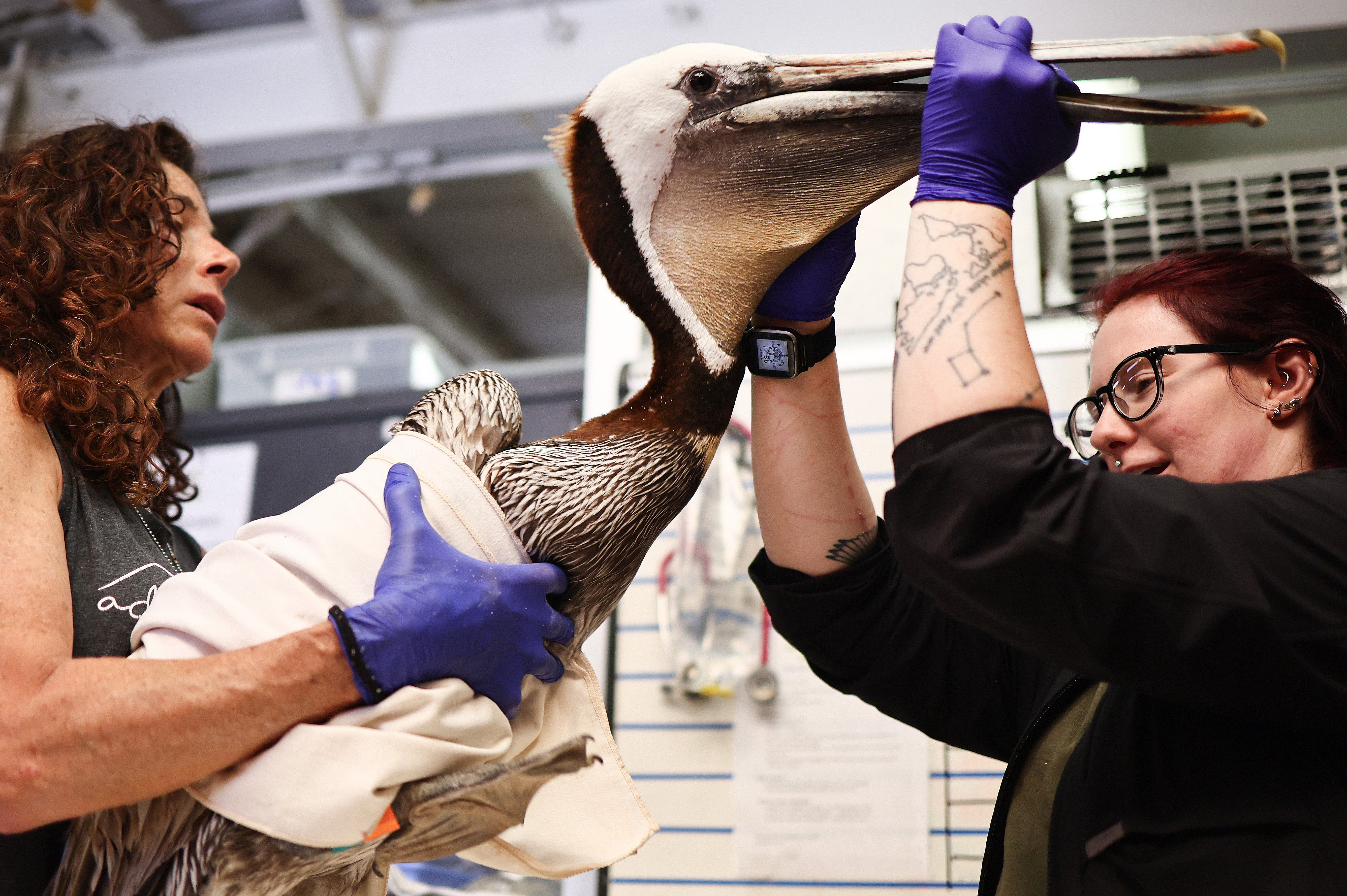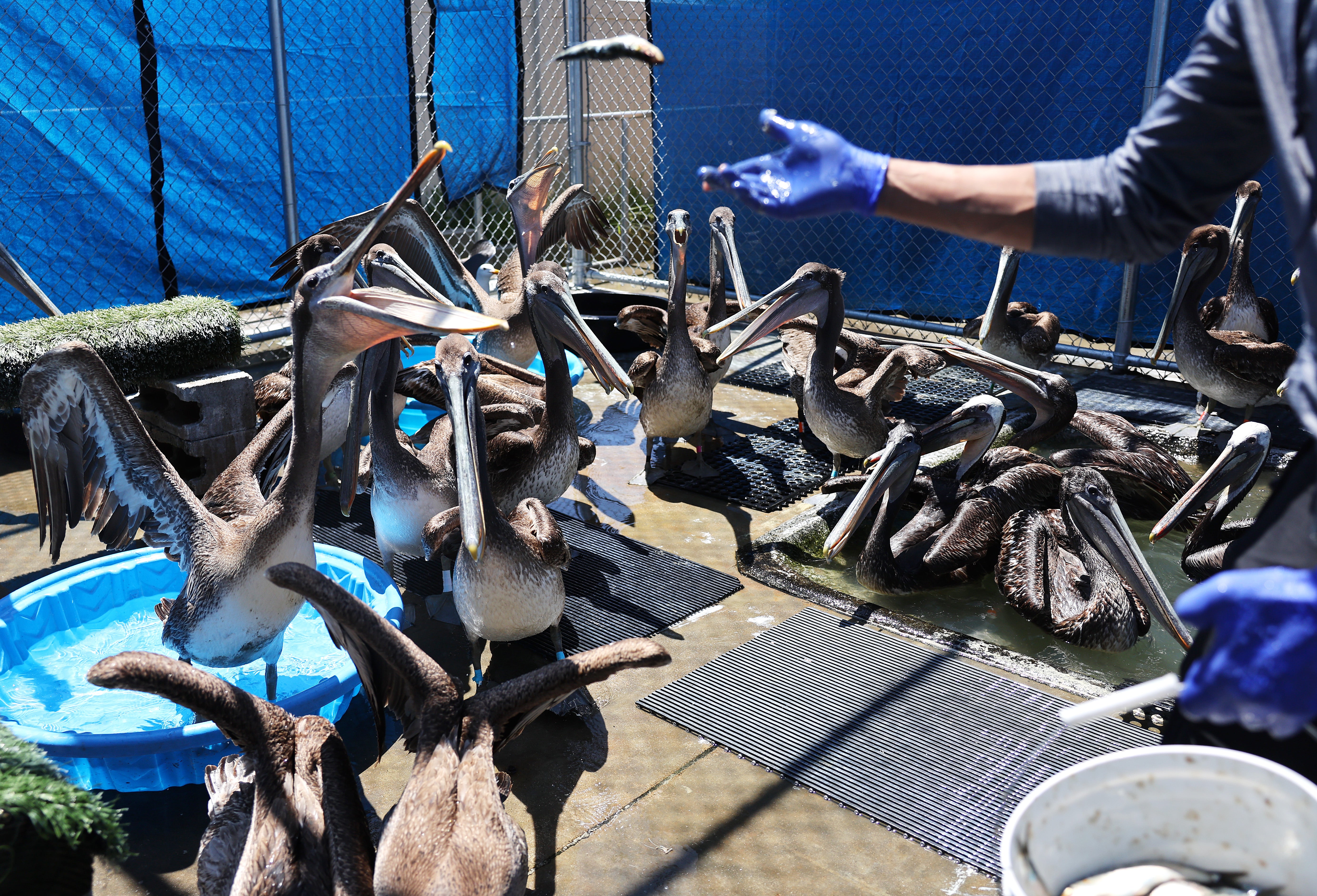Hundreds of starving birds are showing up on California beaches
The influx of dead or starving birds could last for several more weeks
A conservation center in California has taken in hundreds of malnourished birds that experts say are facing weather-driven starvation.
Care facilities have received more than 800 brown pelicans, 400 of which were brought in dead or near-death, an official with the California Department of Fish and Wildlife told the San Francisco Chronicle. Meanwhile, hundreds more are showing up dead on beaches throughout the state.
The International Bird Rescue aviary in Fairfield, California alone has treated some 300 starving pelicans in the last month, the Chronicle reports. Meanwhile, the Wetlands and Wildlife Care Center in Huntington Beach, California is also treating a large influx of pelicans after they got “dozens” of calls from people finding the birds in their backyards or parking lots, The Los Angeles Times reports.
Experts say an unusual weather event is to blame: A late-spring storm that caused low visibility, making hunting difficult for the birds.
“We know from previous experiences that pelicans take extra risks when they’re hungry,” Rebecca Duerr, director of research and veterinary science at International Bird Rescue, told the Chronicle.

A similar incident happened in 2022, when officials identified more than 800 starving pelicans — and were only able to return half of them to the wild, the Chronicle reports.
The influx of dead or starving birds could last for several more weeks.
“They need more food than usual because they’re replacing all that body mass they lost,” Dr Duerr said. “They have the metabolism of a baby.”
Brown pelicans, like those starving in California, are currently a protected species. However, they were listed as endangered from 1970 until 2009, according to the American Bird Conservancy.

While it’s too soon to tell what caused this late storm, it is well-documented that extreme and unusual weather is increasing due to the climate crisis. Extreme weather events have been on the rise since 1980 and will continue to increase in frequency and intensity as the Earth’s atmosphere heats up.
Experts say the climate crisis may drive stronger autumn and winter storms, in particular.
“There are a lot of attribution studies and other lines of evidence showing that autumn/winter storms like this are more damaging because of climate change,” Friederike Otto, senior lecturer in climate science at Imperial College London, previously told The Independent.
“That’s because the rainfall associated with these types of storms is more severe due to climate change, and the storm surges are higher and thus more damaging due to the higher sea levels.”
Join our commenting forum
Join thought-provoking conversations, follow other Independent readers and see their replies
Comments
Bookmark popover
Removed from bookmarks